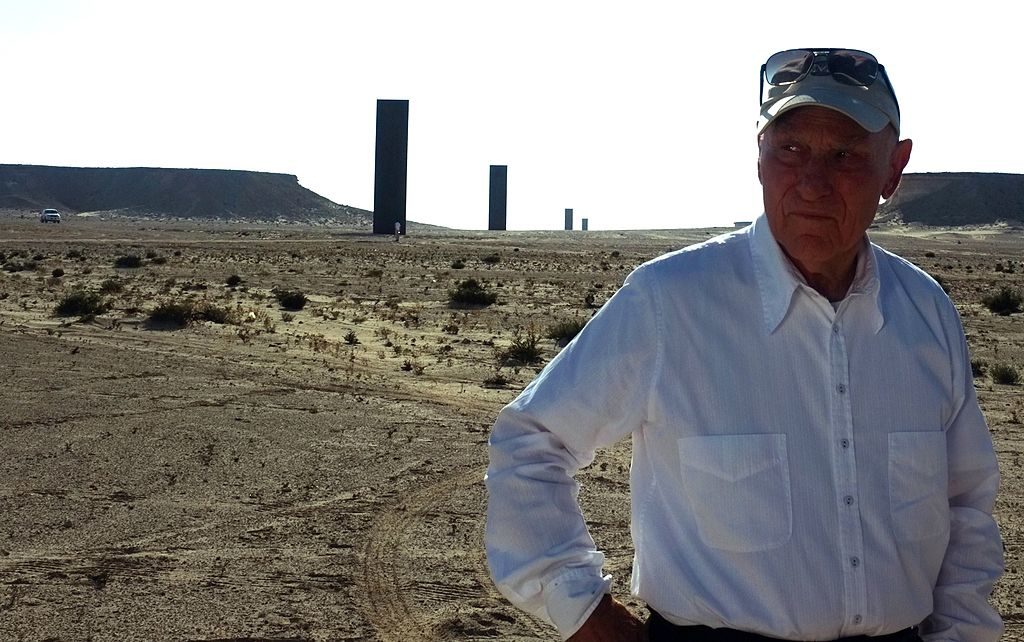Art World
Richard Serra’s Monumental Sculpture in the Qatari Desert Has Been Vandalized Yet Again
The latest attack on the sculpture has prompted a new anti-vandalism campaign to protect public art.

The latest attack on the sculpture has prompted a new anti-vandalism campaign to protect public art.

Taylor Dafoe

Richard Serra’s largest public artwork to date, a line of four 45-foot-tall steel plates spanning nearly four miles in the western Qatari desert, has been vandalized once again.
The incident was announced this week on social media by Qatar Museums, a government organization that oversees the country’s public art. It did not share details of the damage, which took place in late December, but the organization said in a statement that the “vandals were apprehended by authorities, and were referred to Public Prosecution for the necessary legal action to be taken against them.”
“Vandalism of all kinds is a crime punishable by law,” the statement continues, “and Qatar Museums emphasizes our collective social responsibility to preserve public art.”
Neither Qatar Museums nor Gagosian Gallery, which represents Serra, immediately responded to requests for comment.
Despite its remote location in the Brouq nature reserve, Serra’s sculpture, East-West/West-East, has been defaced numerous times since it was erected in 2014. Last March, Qatar Museums reported that the artwork saw “significant and deliberate damage” from visitors.
In September, the organization launched an “anti-vandalism campaign” to protect public artworks in the country. As part of the effort, Serra’s sculpture was cleaned of graffiti and the state installed banners in the nearby village of Zekreet discouraging vandalism. The state may also soon implement surveillance systems in the area.
“Monitoring the artworks has proven to be quite challenging, as many of our artworks are interactive,” acting director of the public art department at Qatar Museums, Abdulrahman al-Ishaq, told Gulf Times last month.
The director explained that Qatar Museums are hoping to launch a series of educational programs around the state’s public art, including lectures and debates, and will make freely available informational materials about the collection for children and families.
“Although these artworks are not confined to a closed space, the community must understand that public art is an extension of a vast collection built by [Qatar Museums] and it is in part their responsibility to embrace and take ownership of these artworks,” al-Ishaq added in the newspaper.
East-West/West-East is one of two public artworks created by Serra in Qatar. A cluster of large steel plates comprises the other, titled 7, which was installed outside the Museum of Islamic Art in Doha in 2011.